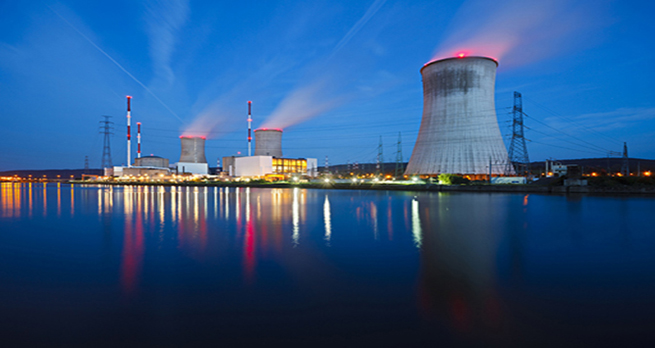4.2.4 Challenges of fusing nuclei
The main challenge of achieving fusion on Earth, as described by Steve Cowley in the video, can be examined by looking at the fusion equation again.
The hydrogen nucleus contains one proton and the deuterium nucleus one proton plus one neutron. Both of these nuclei are positively charged and will therefore repel each other. As we discovered in Week 1, it is the strong force that holds nuclei together and it is certainly capable of overcoming the electrostatic repulsion but only acts at extremely short range. To get the strong force to pull the nuclei together you need to get the nuclei very close. This is no mean feat as the nuclei are trying to push themselves apart!
If the nuclei are going fast enough they will be able to overcome the repulsion to get close enough for the strong force to allow fusion. The intense temperatures and pressures at the centre of stars make these speeds achievable but suitable conditions cannot be easily recreated on Earth.
The fuels used are generally deuterium (hydrogen-2) and tritium (hydrogen-3) – these each have neutrons in their nuclei that contribute to the attraction of strong force but not to the repulsion. Tritium and deuterium fuse to give helium-4 and one neutron. In order to enable nuclei to fuse, a plasma is used. A plasma is a gas that has had a significant proportion of its atoms ionised so that the positively charged nuclei and negatively charged electrons are dissociated from one another. In order to produce a plasma the gas needs to be extremely hot – over 100 million degrees Celsius!
The Joint European Torus (JET) uses magnetic fields to confine the enormously hot fuel, called a plasma. The fields are within a large donut-shaped device called a tokamak or torus.
Another approach is to use lasers to produce pulses of X-rays, fired at a small fuel pellet of tritium or deuterium. The pulses squeeze the pellet causing it to implode and briefly undergo fusion. The National Ignition Facility (NIF) project uses this approach and you will learn more about this later.
In the next section, you will test yourself on what you’ve learned about fusion.
